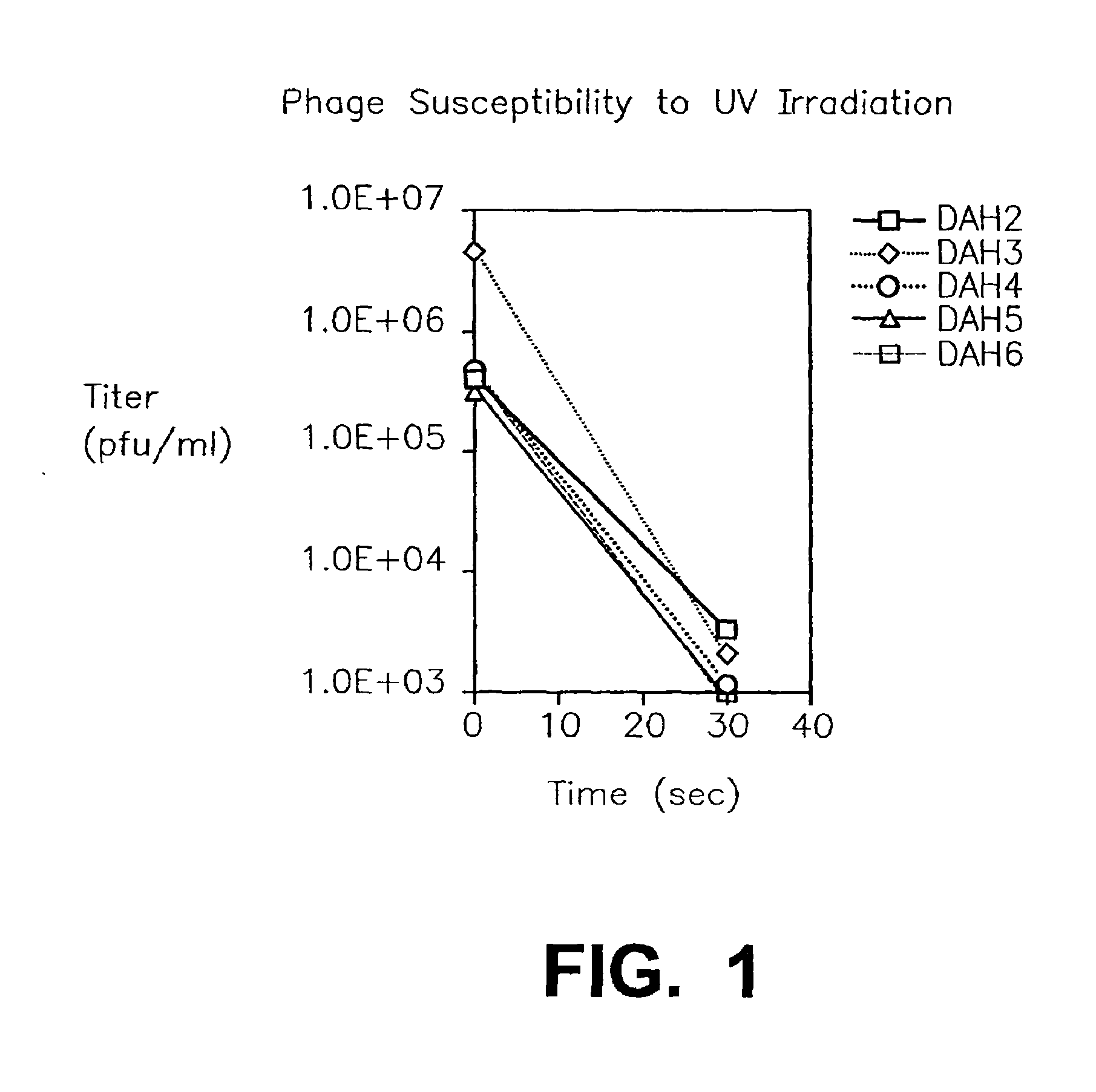Transducing Phages
a technology of phages and phages, which is applied in the field of transducing phages, can solve the problems of difficult implementation of streptomyces-induced gene recovery approaches, large number of secondary metabolites, and inability to fine structure map
- Summary
- Abstract
- Description
- Claims
- Application Information
AI Technical Summary
Benefits of technology
Problems solved by technology
Method used
Image
Examples
example 1
[0045] Experimental Procedures.Bacterial strains and culture conditions. Bacterial strains used in this study are listed in Table 1. Spore stocks were made from strains grown on MYM (Brawner et al., (1985) Gene, 40, 191-201). To prepare spore stocks, bacteria were streaked for isolated colonies on MYM media and incubated and 30.sup.oC for 4 days. An isolated colony was picked and spread on MYM plates and incubated at 30.sup.oC for 4 days or until spores were visible. The spores were removed with a cotton swab and stored at -20.sup.oC. Antibiotics used in the experiments described herein and the concentrations are listed in Table 2.
1TABLE 1 Bacterial Strains and Culture Conditions SPECIES STRAIN GENOTYPE SOURCE Streptomyces A3(2) WT John Innes Centre coelicolor Norwich, UK Streptomyces J2402 M145, prototrophic SCP1.sup.-SCP2.sup.- K. Chater coelicolor whiB:: hyg John Innes Centre Norwich, UK Streptomyces J1258 proA1 hisC9 argA1 K. Chater coelicolor cysD18 uraA1 strA1 John Innes Centr...
PUM
| Property | Measurement | Unit |
|---|---|---|
| Electrical resistance | aaaaa | aaaaa |
| Temperature | aaaaa | aaaaa |
| Concentration | aaaaa | aaaaa |
Abstract
Description
Claims
Application Information
 Login to View More
Login to View More - R&D
- Intellectual Property
- Life Sciences
- Materials
- Tech Scout
- Unparalleled Data Quality
- Higher Quality Content
- 60% Fewer Hallucinations
Browse by: Latest US Patents, China's latest patents, Technical Efficacy Thesaurus, Application Domain, Technology Topic, Popular Technical Reports.
© 2025 PatSnap. All rights reserved.Legal|Privacy policy|Modern Slavery Act Transparency Statement|Sitemap|About US| Contact US: help@patsnap.com

